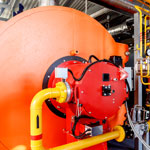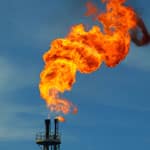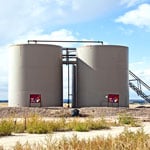Sage Metering regularly publishes white papers on the applications, regulations and use of thermal mass flow meters. Click the appropriate image in the summary to read or download the technical paper.
White Papers by Sage Metering
 Basics of Thermal Mass Flow Measurement
Basics of Thermal Mass Flow Measurement
In this paper, learn why measuring in mass flow is important, and understand the difference between SCFM and ACFM. Learn why you do not need pressure and temperature correction when using a thermal mass flow meter. We also review thermal mass flow measurement theory and typical applications where you use thermal mass flow meters.
C ombustion Efficiency and Thermal Mass Flow Meters
ombustion Efficiency and Thermal Mass Flow Meters
One way to reduce energy consumption in a manufacturing environment is to optimize the combustion control on furnaces, industrial boilers, steam generators, ovens, smelters and process heaters. Thermal mass flow meters assist in achieving combustion efficiency and energy management through accurate and repeatable measurement of gases.
Using Thermal Mass Flow Meters to Measure Flare Gas
Flare gas and vent gas systems burn off waste gases, dispose of surplus gases, and protect people, equipment, and the environment. Measuring and monitoring flare gas assure the system is operating correctly. Additionally, regulations often require measuring flare gas emitted to the atmosphere. There are inherent challenges when measuring or monitoring flare gas, and thermal mass flow meters offer solutions.
Flare Gas and 40 CFR 60 Quad O: Storage Vessels Deadline
EPA 40 CFR 60 Quad O specifies that oil and gas storage vessels emitting six tons per year of volatile organic compounds are required to remove emissions using a combustion device or recovery system. When using a combustion device, a flare gas flow meter or thermal mass flow meter is needed for the continuous monitoring system.
Greenhouse Gas (GHG) Emissions Monitoring Using Thermal Mass Flow Meters
There is a need for accurate measurement and monitoring of greenhouse gases because of the increasing pressure regarding environmental concerns, and international and government regulations on greenhouse gas emissions. This paper explores greenhouse gas emissions monitoring using thermal mass flow meters to measure biogas, landfill gas, digester gas and flare gas.
ISO 50001 Energy Management Systems and Thermal Flow Meters
With the introduction of ISO 50001, facilities are implementing continual energy management systems designed to improve energy efficiency. Thermal mass flow meters are useful in these systems when measuring natural gas flow at different sections of the facility and individual combustion sources. They also are effective at measuring compressed air and can help determine and monitor compressed air leakage.
Articles
 How to Overcome Thermal Mass Flow Meter Limitations
How to Overcome Thermal Mass Flow Meter Limitations
Every flow measurement technology has limits. When pushing the boundaries of a thermal mass flow meter, challenges may arise. What are the limitations of thermal mass flow meters? How do you overcome them? Learn how in this Sage Metering article.
 All You Ever Wanted to Know about Thermal Mass Flow Meters
All You Ever Wanted to Know about Thermal Mass Flow Meters
Read this Q&A between Flow Control and Sage Metering’s expert on thermal mass flow measurement discussing the advantages and disadvantages of thermal mass flow technology, typical end-user pitfalls, application suitability, and installation best practices.
The Challenges and Solutions of Flare Gas Metering
With an increasing need for energy, capturing and reprocessing flare gas is more important than ever. However, flare gas metering has many challenges. In this article, Sage Metering provides some solutions.










